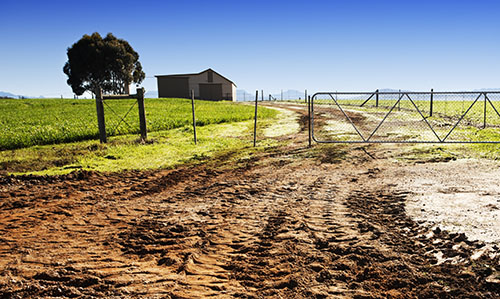Navigating the Thaw
Jan 22, 2024

The cold front that blanketed most of the state in over six inches of snow was the talk of the town last week. While it may have been fun for awhile — we’re sure the kids loved playing in it! — many people are now ready to get back to a normal schedule of work, school, and travel. However, having so much snow and ice thaw at once poses its own set of challenges, especially for livestock owners.
Warmer weather has given rise to muddy conditions, and the forecasted rain for this week will only make it worse. In this blog, we’ll explore practical tips and strategies to help livestock owners manage the aftermath of the snowstorm, ensuring the well-being of their animals and the maintenance of an efficient farm operation.
Strategic feeding locations
Place your livestock’s feeding locations in areas less prone to mud to reduce congestion around food sources and minimize excessive trampling of muddy areas. Consider using mobile feeders to adapt to changing conditions. You may consider throwing down a layer of straw as a temporary solution to reduce mud and provide a drier surface for livestock to navigate.
Shelter
Livestock will often seek shelter from the mud and wet conditions. Ensure your animals have access to dry, comfortable areas such as barns, sheds, or other suitable structures that will protect them from the elements. Use appropriate bedding materials, such as straw or shavings, to insulate them from the cold.
Pasture rotation
If possible, adjust your pasture rotation plan to allow certain areas to recover from the effects of the melting snow. Overgrazing on wet and muddy pastures can lead to soil compaction and further exacerbate the issue. Use temporary fencing to rotate livestock away from particularly muddy areas and give the soil a chance to recover.
Sacrifice areas
If you are unable to rotate your pastures enough, designate specific sacrifice areas where livestock can spend the majority of their time during wet conditions. These areas, equipped with proper footing, can take the brunt of the mud and allow other sections of the pasture to recover.
Health checks
With the increased risk of mud-related health issues, such as hoof problems or rain rot, conduct regular health checks on your livestock. Watch for signs of lameness, as the mud can cause animals to slip. Keep an eye on their overall well-being, addressing any concerns promptly.
Manure management
Regularly remove manure from paddocks and high-trafficked areas, as well as the areas that you have designated as their shelter. Accumulated manure contributes to mud formation and can create unsanitary conditions. Proper disposal or composting of manure is therefore essential for mud control.
With thoughtful planning and proactive measures, you can successfully navigate the thaw. Your local Co-op has a variety of winter management supplies and equipment to keep your animals and environment resilient. Find the nearest location here.
For more content like this, read the latest issue of The Cooperator.
Warmer weather has given rise to muddy conditions, and the forecasted rain for this week will only make it worse. In this blog, we’ll explore practical tips and strategies to help livestock owners manage the aftermath of the snowstorm, ensuring the well-being of their animals and the maintenance of an efficient farm operation.
Strategic feeding locations
Place your livestock’s feeding locations in areas less prone to mud to reduce congestion around food sources and minimize excessive trampling of muddy areas. Consider using mobile feeders to adapt to changing conditions. You may consider throwing down a layer of straw as a temporary solution to reduce mud and provide a drier surface for livestock to navigate.
Shelter
Livestock will often seek shelter from the mud and wet conditions. Ensure your animals have access to dry, comfortable areas such as barns, sheds, or other suitable structures that will protect them from the elements. Use appropriate bedding materials, such as straw or shavings, to insulate them from the cold.
Pasture rotation
If possible, adjust your pasture rotation plan to allow certain areas to recover from the effects of the melting snow. Overgrazing on wet and muddy pastures can lead to soil compaction and further exacerbate the issue. Use temporary fencing to rotate livestock away from particularly muddy areas and give the soil a chance to recover.
Sacrifice areas
If you are unable to rotate your pastures enough, designate specific sacrifice areas where livestock can spend the majority of their time during wet conditions. These areas, equipped with proper footing, can take the brunt of the mud and allow other sections of the pasture to recover.
Health checks
With the increased risk of mud-related health issues, such as hoof problems or rain rot, conduct regular health checks on your livestock. Watch for signs of lameness, as the mud can cause animals to slip. Keep an eye on their overall well-being, addressing any concerns promptly.
Manure management
Regularly remove manure from paddocks and high-trafficked areas, as well as the areas that you have designated as their shelter. Accumulated manure contributes to mud formation and can create unsanitary conditions. Proper disposal or composting of manure is therefore essential for mud control.
With thoughtful planning and proactive measures, you can successfully navigate the thaw. Your local Co-op has a variety of winter management supplies and equipment to keep your animals and environment resilient. Find the nearest location here.
For more content like this, read the latest issue of The Cooperator.